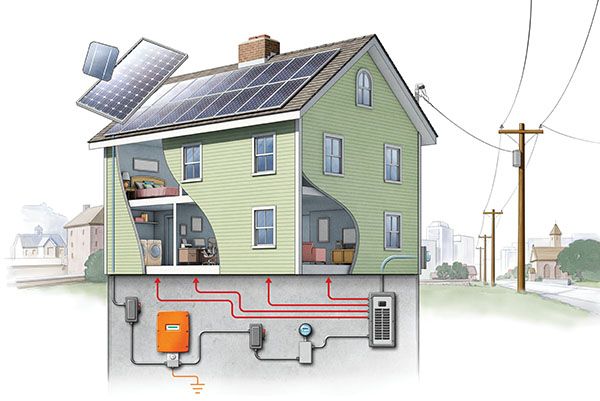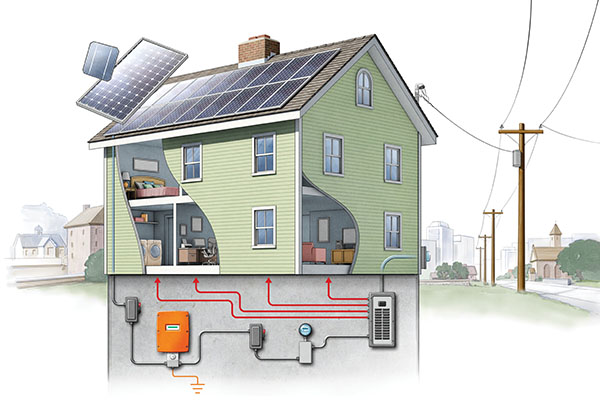
There was a big push recently in several Connecticut towns, including the one where I live, to encourage residents to install rooftop photovoltaic systems. The program, called Solarize Connecticut, involves a coordinated marketing, education and outreach effort along with a pricing structure that reduces the cost of the systems based on the number of people who sign up. Installing solar had been on my “must look into” list for some time, so I attended an informational session with about 30 other people to find out more.
Aside from the financial structure of the program, many of the questions raised by residents dealt with the relationship of their PV system to the local power grid. They wanted to know how it was connected, whether they would still be able to use power from the grid, how much money they might save, and whether they could count on their solar system to keep the lights on and the refrigerator running when the grid went down. (The answer is no, by the way.)
Those questions prompted me to look into the workings of grid-tied photovoltaic systems in the June/July issue of Fine Homebuilding. Grid connections are a big part of what has made solar power for home use practical-and increasing popular-in the last few years. (The other factor is the declining price of solar components, making it a near no-brainer for those with a serious commitment to energy efficiency.) Tying a home solar system to the grid eliminates the need for expensive storage batteries and, with net-metering arrangements, makes it financially viable for a homeowner to produce some of his own electricity.
But the economics of grid connections are getting tricky. Utilities are complaining that net-metering forces non-solar customers to bear a larger share of costs associated with maintaining the grid that all customers rely on to some degree. As a result, net metering arrangements have been altered in some states and surcharges added in others. Still other localities are experimenting with a “value of solar tariff” (VOST) model that sets a specific value for solar-generated electricity that’s sold back to the utility. But the path here is not clear, either. Minnesota adopted a VOST in April; within a month, the state’s largest utility asked the state to reconsider the move.
The disparity in home-solar adoption rates between areas that allow net metering and those that don’t makes it clear that how home solar power is valued has everything to do with whether it is embraced. If the rules continue to change, that will make efforts to convince homeowners to adopt solar power for home use all the more difficult.
Fine Homebuilding Recommended Products
Fine Homebuilding receives a commission for items purchased through links on this site, including Amazon Associates and other affiliate advertising programs.

Affordable IR Camera

8067 All-Weather Flashing Tape

Reliable Crimp Connectors

Drawing: John Hartman



























View Comments
The pending expiration of the 30% federal tax credit in 2016 will also impact the number of customers who will purchase installations of PV-solar from our firm.
The odd attitude from utility co's who want to add a tariff (read - penalty)for customers who choose to install grid-tied PV systems belies the truth: that the PV systems provide power to the grid during peak usage periods while withdrawal from the grid occurs during off-peak times.
PV (and wind, to a lesser degree) power generation benefits utilities and reduces the need, or delays it, for building new power generating facilities or upgrading their existing plants.
Battery improvements (for on site storage) are constantly on the march. The utility co's are going to bite the hand that feeds them if their tariffs approach the overall life-cycle costs to cut the cord. Battery back up also allows the home to continue on with power if the grid goes down - something that is happening more frequently every year.
Inverter systems are available in hybrid form that permit both grid connection, battery backup, and home generator integration.
Installed cost per watt continue to drop off and tax credits, once gone and mind-sets are adjusted, will no longer be needed to justify the up-front costs.